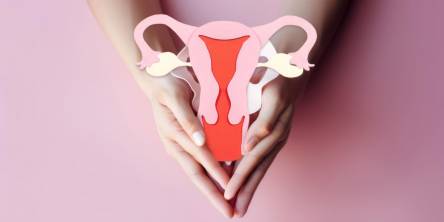Test for Infertility in Men and Women
To clinically define, infertility is a kind of reproductive system disease that bars individuals from achieving a clinical pregnancy after a year or more of having regular unprotected sexual intercourse. Infertility can happen in both men and women. The best way to know the chances of conception is by getting a test for infertility done.
Causes of Infertility
A number of factors cause infertility in men and women both. Let’s have a look at them
Infertility Causes in Women
- Ovulation Problem – In order to get pregnant it’s important for the ovaries to produce healthy eggs and release them at regular intervals. Irregular ovulation makes for one of the main causes of infertility here.
- Damaged reproductive Parts – Damaged fallopian tube or uterus and abnormal cervical mucus can lead to infertility.
- Malfunctioning of hypothalamus – Failure of the hypothalamus to trigger and control hormonal stimulus to ovaries to produce healthy eggs is yet another cause.
- PCOS – A woman with Polycystic ovary syndrome can experience infertility.
- Age – Progress age is another factor. If a female is trying to conceive post the age of 40 years, the chances are quite low.
Infertility Causes in Men
- The dysfunctionality of Reproductive organs – At least one testicle must function properly in order to produce testosterone and other hormones which trigger sperm production. Failure to do so results in infertility in men.
- Inappropriate ejaculation – Sperm ejaculated plays a vital role in conception. A problem with the delicate tubes that carry sperm to semen can cause infertility.
- Insufficient Production of Sperm – A low sperm count is one of the main reasons behind infertility.
- Functional Sperm – if the movement of sperm is abnormal, the chances of it reaching or penetrating into an ova are quite low.
Infertility Tests
Different tests check for fertility in men and women. Read below to know more about fertility tests in men and women.
Fertility Tests in Women
- Ovulation Testing – This makes for the first test done by a physician to check for the chances of conception in women. An over-the-counter prediction kit helps in detecting the flow of luteinizing hormone which is typically made by the body just before ovulation.
- Hysterosalpingography – During this test, X-ray contrast is injected into the patient’s uterus to produce images that indicate the presence of abnormalities therein. It also helps in checking whether the fluid spills off the fallopian tube or passes through the uterus.
- Ovarian Reserve Testing – This typically is useful in defining the quality of eggs available in the body for ovulation. Women above the age of 35 years are at a risk of depleted egg ratio.
- Pelvic Ultrasound – This looks the presence of disease in the uterine or fallopian tube.
- Laparoscopy – A minimally invasive surgery, it involves the examination of the fallopian tube, ovaries and uterus for the existence of endometriosis, blockages, scarring or irregularities of the fallopian tubes, and issues with the uterus or ovaries.
Fertility Tests for Man
- Semen Analysis – Analysis of semen makes for an important test in defining the ability of a man to offer enough sperms for fertilization. In this test, a sample of semen is sent to the laboratory where the number of sperms is counted. A check for the presence of abnormalities is also done.
- Scrotal Ultrasound – This test helps in checking varicocele or other problems in the testicles and its supporting edifices.
- Hormone Testing – Hypothalamus and testicles play a vital role in sperm production and sexual development. Abnormality in organ structure or hormone production can lead to infertility.
- Post-ejaculation urinalysis – Presence of sperms in urine helps in indicating whether the sperms are going back inside the bladder or moving out of the penis during ejaculation.
- Testicular biopsy – In this, a sample of testicles is removed for conducting a biopsy which in turn aids in showcasing whether the sperm production is normal or not.
All the above-listed diagnosis and fertility tests are simple in nature and possess the least risk to the health of the individuals. A few of these tests are also know to improve fertility in women.
Similar Articles
You've probably heard the phrase "getting your tubes tied," if not "tubal ligation" (or "tubectomy")
Menstruation is a natural process, but for many women, it becomes a real challenge due to lower abdominal pain. Dysmenorrhea is a condition in which menstruation is accompanied by severe pain.
When it comes to breast reconstruction, misinformation spreads faster than a Wi-Fi signal at a coffee shop.
Choosing the right tampon is important for both comfort and health. With more women seeking eco-friendly products free from harmful chemicals, organic tampons have become a popular option. In this article, you will learn the eight essential tips provided to help you make an informed choice when buying organic tampons in retail stores.
If you have hip discomfort during perimenopause or beyond menopause, there may be a relationship. Reduced estrogen levels might raise your chance of getting gluteal tendinopathy. They may also contribute to osteoarthritis, which can damage several joints, including the hips.
Of the estimated total population having osteoporosis and osteoarthritis, 80% are women. One in two women over the age of 50 get serious fractures because of onset or severe osteoporosis. A bone injury at that age means serious length of recovery and difficulty in returning to normal mobility.
Breast lift surgery lifts the breasts, strengthens the tissue, and eliminates extra skin to boost elevation and better nipple positioning.
An enlarged vagina can occur as a result of unrelated events, such as the end of pregnancy or after sex. It can also be caused by vaginal irritation from wearing synthetic fabric underwear or a sexually transmitted disease such as genital herpes.
Uterine fibroids are one of the most common gynecological diseases that affect many women during their reproductive years. In this article, we will look at all aspects of this condition, including its causes, symptoms, diagnosis, treatment, and possible complications.









